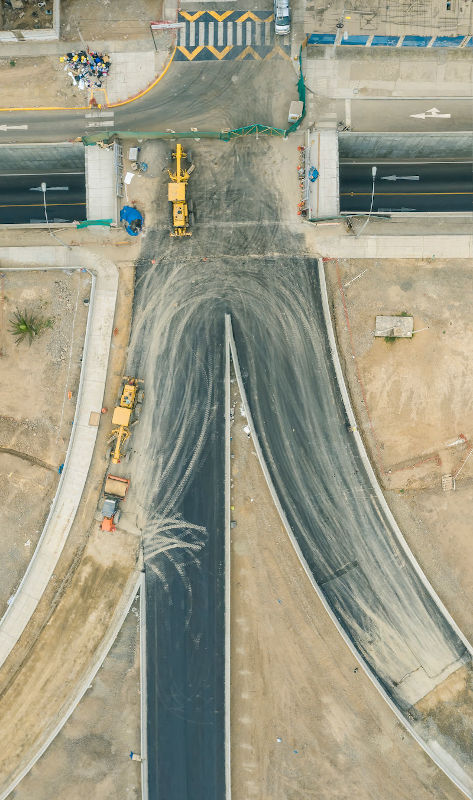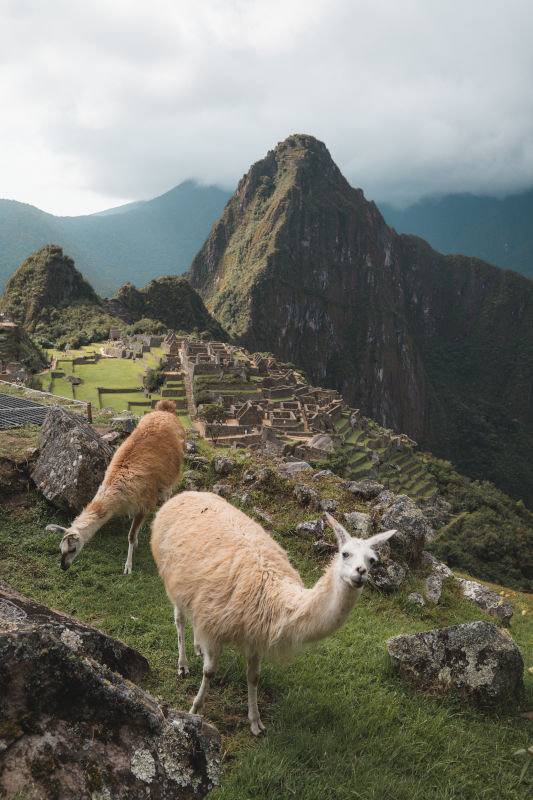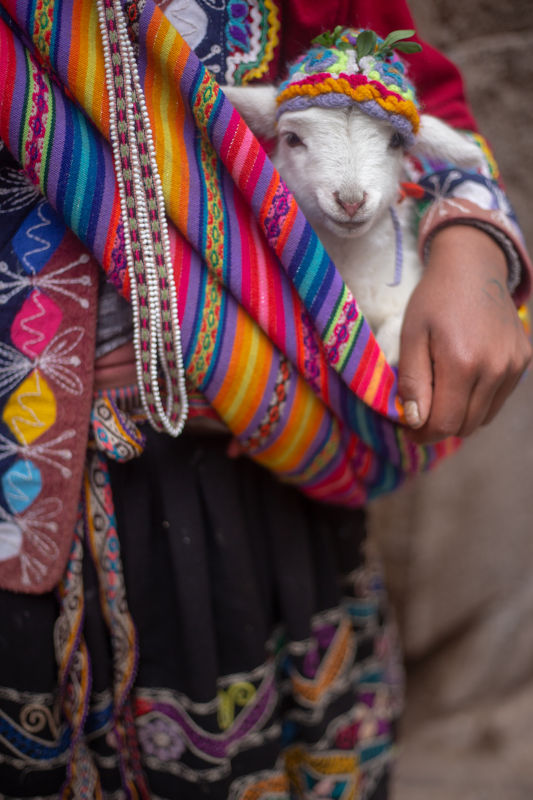In the ongoing process of updating the National Environmental Policy to 20301 , the decrease of environmental goods and services is recognized as a main problem that affects the development of people and the environmental sustainability. The direct causes of the decrease are the loss of biological diversity and the deterioration and degradation of the environmental quality1 . For instance, one-third of the country is in some state of desertification, mainly due to salinization and soil erosion2 . These elements relate to deforestation and degradation of forests and other ecosystems, illegal and informal activities of use of biological diversity and mineral products, the introduction and spread of alien and invasive species.

Besides, regarding the environmental quality, the challenges focus on decreasing high emissions of polluting gases, high wastewater discharges, inadequate solid waste management, non-compliance with environmental obligations, and chemicals management1 . The magnitude of the land degradation process that the country is going through is because of inappropriate productive management decisions such as unsustainable agricultural, agricultural, forestry, and mining practices. On the north coast, there is indiscriminate deforestation of the dry forest to obtain cheap fuel. In the paramos of Cajamarca or the highlands of Huancavelica, Ayacucho, Cusco, and Puno, there is the intensive use of the soil and inadequate cultivation practices1 . It is worth mentioning that the drylands regions (mainly in the Costa and Sierra) show growing deforestation (as in the rest of the country) that has increased since 2000, in more than one million hectares in fifteen years1 . Peru has become one of the world's leading exporters of asparagus and quinoa3 . For instance, in the period 1995–2014, Peru increased by 43% the quinoa planted hectares4 . Besides agriculture, mining imposes pressures on ecosystems. In 2017, mining contributed around 10% of the national GDP; it accounted for 62% of total exports5 . In this context, legal but mainly illegal mining of gold has importantly impacted the ecosystems in regions like Madre de Dios6 .
- 1a1b1c1d1eMinisterio del Ambiente. (2020b). Primer Entregable de la actualización de la Política Nacional del Ambiente. Lima: MINAM.
- 2Ministerio de Ambiente. 2021. Peru’s National Report on the State of the Environment 2014-2019, available in https://sinia.minam.gob.pe/inea/wp-content/uploads/2021/07/INEA-2014-2019_red.pdf
- 3FAOSTAT. Database: Food and Agriculture Organization of the United Nations, 2020. Available online: http://www.fao.org/faostat/en/ (accessed on 12 Nov 2021).
- 4Bedoya-Perales, N.S., Pumi, G., Mujica, A., Talamini, E., Domingos Padula, A., 2018. Quinoa Expansion in Peru and Its Implications for Land Use Management. Sustainability 10.
- 5Ministerio de Energía y Minas. 2020, en
https://www.gob.pe/institucion/minem/noticias/29754-minem-casi-el-10-de…, (accessed on 12 Nov 2021). - 6Sistema de Detección Temprana y Vigilancia Ambiental - Sideteva, implementada por el MINAM. Available in http://geoservidorperu.minam.gob.pe/sideteva/news/news/publicdetail?id=23 (Accessed on 15- Nov-2021).
Peru has experienced notable economic growth in recent years. Between 2005 and 2015, Peru’s gross domestic product grew by an annual average of 5.8%, owing to a combination of macroeconomic stability, openness to trade, and inflows of foreign direct investment attracted by the country’s wealth of natural resources and high commodity prices1 . However, the economic growth has been accompanied by environmental degradation. Between 2001 and 2019, Peru lost approximately 2.4 million hectares of forest2 . According to Minagri (2018)3 , 85% of deforestation is caused by very small producers, followed by artisanal mining, and road construction1 . Additionally, illegal and informal mining directly impacts the price of gold in the world market, which, added to other local factors, Keeps on affecting the Amazon region in Peru4 . By 2017, the National Ministry of Environment developed the historical spatial information of the deforested area due to illegal and informal mining activity in the department of Madre de Dios, which amounted to approximately 70,000 hectares5 .

Ecosystem degradation points out that the direct drivers are small agriculture and mining2 , jointly with the urban expansion linked to air and water pollution. The underlaying drivers are population growth, increasing demand of certain resources (gold and agricultural commodities like asparragus6 or quinoa7 ). Besides, there is an institutional weakness to curb deforestation and a valuation of the standing forest and their ecosystem services. In addition, research on the adaptation of introduced crops in regions where they were not present before is almost non-existent. Conflicts also continue to occur on indigenous lands due to the absence of titling. According to the CELAC and the OECD (2016)1 , this leads to an increase in socio-environmental conflicts and limits the efficient use of agroforestry resources.

Regarding chemical pollution which is linked to urban expansion, it is to notice that Peru is an importer of chemical substances, so the State has a crucial role in regulating their use. Chemical substances management focuses on minimizing the adverse effects of chemical substances on human health and the environment. Therefore, chemicals with dangerous characteristics that now are absent must be registered1 .
- 1a1b1c1dComisión Económica para América Latina y el Caribe (CEPAL)/Organización de Cooperación y Desarrollo Económicos (OCDE), Evaluaciones del desempeño ambiental: Perú, Santiago, 2017.
- 2a2bMinisterio de Ambiente. 2021. Peru’s National Report on the State of the Environment 2014-2019, available in https://sinia.minam.gob.pe/inea/wp-content/uploads/2021/07/INEA-2014-2019_red.pdf
- 3Ministerio de Agricultura y Riego. (2018). Acciones 2018: Comisión Multisectorial Permanente de Lucha Contra la Tala Ilegal. Available in https://www.osinfor.gob.pe/wp-content/uploads/2019/02/Memoria-de-Gesti%C3%B3n-Tala-Ilegal-V7.pdf (Accessed on 15- Nov-2021).
- 4Swenson, J., Carter, C., Domec, J., Delgado, C., 2011. Gold Mining in the Peruvian Amazon: Global Prices, Deforestation, and Mercury Imports. PLOSweS ONE 6, e18875.
- 5Sistema de Detección Temprana y Vigilancia Ambiental - Sideteva, implementada por el MINAM. Available in http://geoservidorperu.minam.gob.pe/sideteva/news/news/publicdetail?id=23 (Accessed on 15- Nov-2021).
- 6Terán-Velazco, C.A. Impactos sociales del espárrago en el Perú. 2017. Available online: https://repositorio.ulima.edu.pe/handle/20.500.12724/6003 (Accessed on 15 Nov 2021).
- 7Bedoya-Perales, N.S., Pumi, G., Mujica, A., Talamini, E., Domingos Padula, A., 2018. Quinoa Expansion in Peru and Its Implications for Land Use Management. Sustainability 10.
The combined environmental impacts are related to four main human activities: small-scale farmers for agriculture and livestock rising, mining (legal and illegal), urban expansion (including road construction), and overfishing1 . Such processes impact 1) forest and biodiversity loss, 2) soil and ecosystem degradation, 3) chemicals pollution and solid waste production, and 4) biodiversity depletion and pollution in marine and aquatic ecosystems1 . Moreover, land use/cover change associated with those human activities represented 53% of the country’s greenhouse gas emissions2 . It is to notice that mining activities, mainly gold extraction, are key for the country’s economy. Legal and illegal gold mining impact gold prices worldwide; consequently, gold demand and supply affect the pressure on Peruvian ecosystems in regions like Madre de Dios, Ucayali, and Loreto3 .

The agriculture and fishing sectors are key to the country's food security, and they depend directly on the climate. These sectors contribute 5.7% of the national GDP4 , and together with the mining sector, they employ 25.8% of the employed Economically Active Population (EAP) at the national level and 74% of the rural EAP1 . Moreover, 55% of the population that is in a poverty-level work in these activities. Consequently, an important share of Peru’s population is very sensitive to climate change1 . In addition, the effects of climate change would increase the rate of biological loss. Ecosystems that are already significantly altered by human activities would be particularly affected by climate change. Expected impacts are acceleration in the species loss that would lead to a decrease in the supply of the environmental goods and services1 (i.e., decrease in crop yields). The most affected regions that have been reported due to climate are Amazonas, Apurímac, Cusco, Huancavelica, and Pasco. These regions concentrated 63% of the total climatic emergencies1 .
- 1a1b1c1d1e1fMinisterio de Ambiente. 2021. Peru’s National Report on the State of the Environment 2014-2019, available in https://sinia.minam.gob.pe/inea/wp-content/uploads/2021/07/INEA-2014-2019_red.pdf
- 2Ministerio del Ambiente y Ministerio de Agricultura y Riego, 2020. Reporte Anual de Gases de Efecto Invernadero del sector Uso de la Tierra, Cambio de Uso de la Tierra y Silvicultura del año 2016. Available in https://infocarbono.minam.gob.pe/wp-content/uploads/2021/06/RAGEI-2016-_UTCUTS_Ajustado-MINAM-14-06-21.pdf (Accessed on 15-Niv-2021).
- 3Sistema de Detección Temprana y Vigilancia Ambiental - Sideteva, implementada por el MINAM (http://geoservidorperu.minam.gob. pe/sideteva/news/news/publicdetail?id=23).
- 4Banco Central de Reserva del Perú (2015). Memoria 2014. Available in https://www.bcrp.gob.pe/docs/Publicaciones/Memoria/2014/memoria-bcrp-2014.pdf
Peru has developed advances in environmental information and its accessibility. The National System for Environmental Information (SINAM) includes data on water, atmosphere, air, biodiversity, climate change, environmental economics, waste, soil, and land1 . However, much of the data are at a national level. There are no detailed data (i.e., departments) or spatially explicit. Some areas of missing or outdated data consist of:
Land use/ cover:
- native forest distribution through the time because the available data taken from Terrai-Peru shows updated data on forest loss or gains. However, there is not possible to use those data for land-use change modeling;
- agricultural and livestock grazing areas expansion;
- spatial data of mining concessions;
- land use/cover national maps with different land-use cover classes for different time horizons.
Agriculture, livestock and forestry:
- annual spatial data distribution and production of main crops (different kinds of potatoes, maize, asparagus, quinoa, palm oil);
- cattle distribution and production at different levels (districts, communes, or municipalities);
- data about the use of agricultural fertilizers at different levels (departments);
- data on agricultural subsidies (department);
- spatial data on soil fertility;
- data on the use of water by the agricultural and livestock sector, and its treatment;
- sensitivity of main crops to climatic variables (temperature and precipitation);
- annual data on legal and illegal forestry (species, quantity and location).
Biodiversity:
- Missing spatial location (geographical coordinates) of the taxa records;
- data on population trends of threatened species;
- annual data on poaching and illegal trade of species;
- data and analysis on the effectiveness of protected areas;
- data on population trends of threatened species;
- spatial distribution of alien species and population trends.
Climate:
- changes in climatic variables (maximum or minimum temperature, precipitation, seasonality, evapotranspiration) based on the latest IPCC’s scenarios (CMIP6).
Waste and pollution:
- Waste generation at the department level;
- recycling rate at the department level.
Water:
- Water use at the department, commune, or municipality level;
- treatment rate at the department, level.
Population:
- Socioeconomic indicators (i.e., population, incomes, Gini, illiteracy, education level, etc.) at the department level.
- 1Sistema Nacional de Información Ambiental. https://sinia.minam.gob.pe/informacion/inicio-tematicas
The Ministry of Environment (MINAM) is the principal authority in the environmental sector in Peru. In 2015, the MINAM and the Ministry of Economy and Finances published the guidelines for public investment in biological diversity and ecosystem services (Resolution 199-2015-MINAM)1 , which was the base for future instruments to promote policies on ecosystem conservation. In 2019, these guidelines integrated the topic of investment projects for conservation and sustainable use of biodiversity (178-2019-MINAM). Regarding climate change, Peru has several policies and transversal management instruments. Some examples are 1) the incorporation of risk management in the Risk Management Plan and Adaptation to Climate Change in the Agricultural Sector Period 2012-2021. 2) Water management under climate change (Law 29338) and the National Strategy for Food Security 2013-2021, developed by the Ministry of Agricultural Development and Irrigation. Moreover, the establishment of funds for disaster management and adaptation to climate change. In addition, there is a Multisectoral Working Group that generates technical information on the implementation of Nationally Determined Contributions.

Jointly, in 2018, Peru developed the Law on Climate Change (No. 30754) to coordinate, articulate, design, execute, report, monitor, and evaluate public policies for the comprehensive, participatory, and transparent management of climate change adaptation and mitigation measures to reduce the country's climatic vulnerability. Climate change is also present in the Strategic National Development Plan (Bicentennial Plan or Peru towards 2021) and the National Strategy for Climate Change (ENCC)2 . Such strategy articulates the management of climate change for compliance with the NDC goals. The national strategy includes topics like water, fishing and agriculture, health, and forest. Regarding forestry, the country developed the National Strategy on Forests and Climate Change (ENBCC, Decree 007-2016-MINAM), which sets the standard for interventions in the public and private sectors to reduce deforestation and achieve conservation, with a long-term vision (until 2030). This strategy has two specific objectives: 1) reduce GHG emissions from the Agriculture, Forestry, Livestock and Land Use sector in an economically competitive, sustainable, equitable, and inclusive, in a way that contributes to the development of the country, improves the well-being of the population and contribution to the global effort to mitigate climate change. 2) Reduce the vulnerability of the forest landscape and the population that depends on these ecosystems, especially indigenous and peasant peoples, in the face of climate change, improving their resilience and considering their traditional knowledge1 .
- 1a1bMinisterio de Ambiente. 2021. Peru’s National Report on the State of the Environment 2014-2019, available in https://sinia.minam.gob.pe/inea/wp-content/uploads/2021/07/INEA-2014-2019_red.pdf
- 2Ministerio del Ambiente, 2015. Estrategia Nacional ante el Cambio Climático. Recuperado de https:// www.minam.gob.pe/wp-content/uploads/2015/09/ENCC-FINAL-250915-web.pdf
Alma Mendoza-Ponce, Consultant
UNEP’s Latin America and the Caribbean Office
Contact: alma.mendozaponce@un.org
- Ministerio de Ambiente. 2021. Peru's National Report on the State of the Environment 2014-2019, available in https://sinia.minam.gob.pe/inea/wp-content/uploads/2021/07/INEA-2014-20…
- Ministerio del Ambiente, 2015. Estrategia Nacional ante el Cambio Climático. Recuperado de https:// www.minam.gob.pe/wp-content/uploads/2015/09/ENCC-FINAL-250915-web.pdf
- National Environmental Policy by 2030. Available https://cdn.www.gob.pe/uploads/document/file/2037169/POLITICA%20NACIONA…
- Comisión Económica para América Latina y el Caribe (CEPAL)/Organización de Cooperación y Desarrollo Económicos (OCDE), Evaluaciones del desempeño ambiental: Peru, Santiago, 2017. https://repositorio.cepal.org/bitstream/handle/11362/42527/1/S1600240_e…
